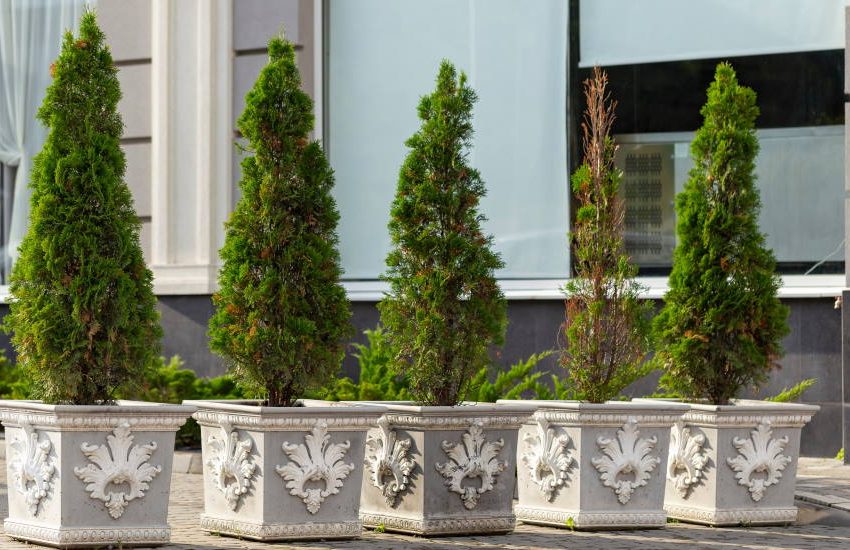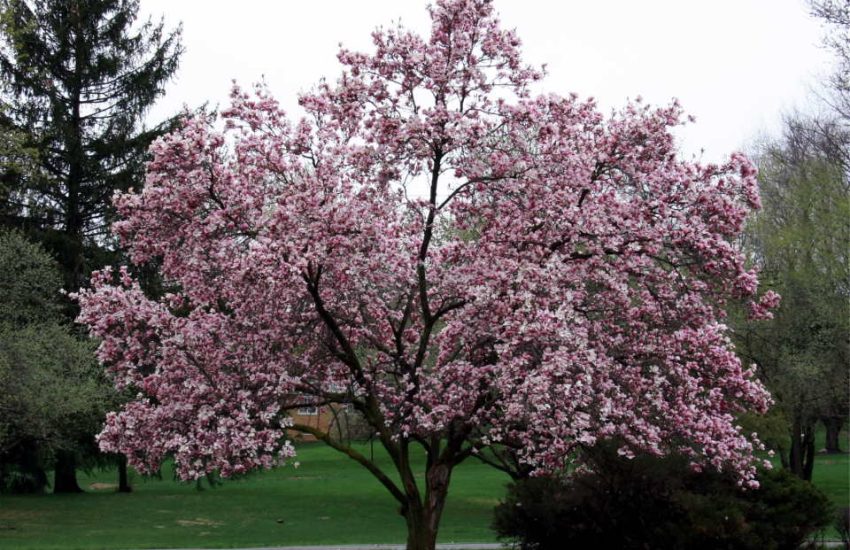When to Plant Tulip Bulbs: A Guide to Timing Your Planting Correctly
Tulips are a beloved flower that are known for their vibrant colors and delicate petals. Planting tulip bulbs is a popular gardening activity that can bring a burst of color to any outdoor space. However, it is important to know the right time to plant tulip bulbs to ensure that they grow properly and bloom at the right time.

The ideal time to plant tulip bulbs is in the fall, typically between September and November. Planting during this time allows the bulbs to establish roots before the ground freezes, which is essential for their growth and development. In addition, planting in the fall ensures that the bulbs will receive the necessary amount of cold weather exposure to stimulate their growth and blooming in the spring.
If you miss the fall planting window, it is still possible to plant tulip bulbs in the spring. However, the blooms may not be as vibrant or long-lasting as those planted in the fall. It is important to note that tulip bulbs should not be planted during the summer months, as the heat can cause them to dry out and die. By planting tulip bulbs at the right time, gardeners can enjoy a beautiful display of colorful blooms in the spring.
Understanding Tulip Bulbs

Types of Tulip Bulbs
Tulip bulbs come in various types and varieties, each with its own unique characteristics. The most common types of tulip bulbs are the single early, double early, triumph, darwin hybrid, and parrot. Other types include the fringed, viridiflora, kaufmanniana, and fosteriana.
Single early tulip bulbs are the earliest to bloom and are perfect for colder climates. Double early tulip bulbs, on the other hand, have a double layer of petals and bloom after the single early. Triumph tulip bulbs are the most popular type of tulip bulbs and come in a wide range of colors. Darwin hybrid tulip bulbs are known for their large blooms and come in bright colors. Parrot tulip bulbs have fringed petals and come in vibrant colors.
Fringed tulip bulbs have fringed petals, while viridiflora tulip bulbs have green stripes on their petals. Kaufmanniana tulip bulbs have a water lily shape and are perfect for rock gardens. Fosteriana tulip bulbs are the largest and have a classic tulip shape.
Tulip Bulb Anatomy
Tulip bulbs consist of several parts, each with its own function. The outer layer of the bulb is called the tunic, which protects the bulb from damage and dehydration. The scales are the fleshy layers that store nutrients for the bulb to grow. The basal plate is the bottom of the bulb, where the roots grow from.
When planting tulip bulbs, it is important to plant them with the basal plate facing down and the pointy end facing up. This ensures that the roots will grow downward and the stem will grow upward. Tulip bulbs should be planted in the fall, before the ground freezes, and will bloom in the spring.
In conclusion, understanding the types and anatomy of tulip bulbs is crucial for successful planting and blooming. With the right knowledge and care, tulips can be a beautiful addition to any garden.
Optimal Planting Time
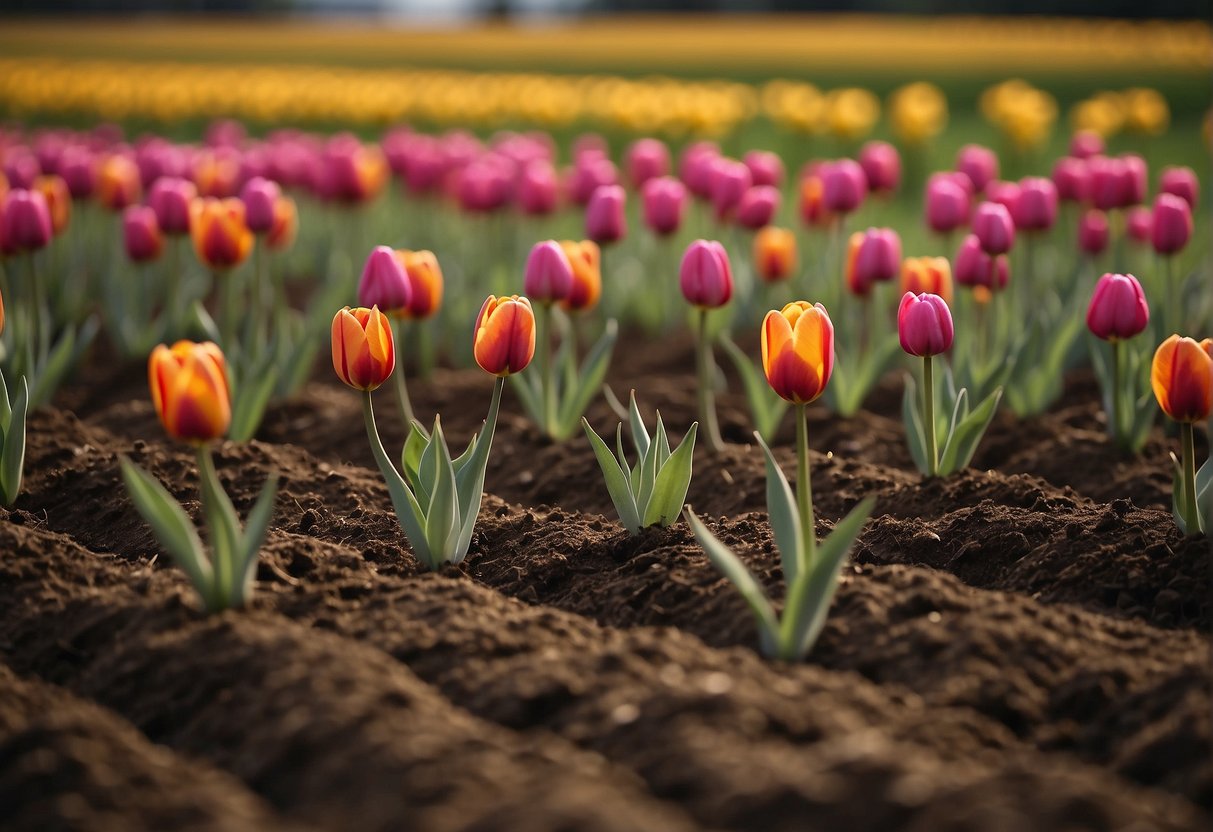
Seasonal Timing
Tulips are typically planted in the autumn months of September, October, November, or December. This allows the bulbs to establish roots before the ground freezes in late winter. Planting in early winter is also an option, but it may be riskier as the bulbs may not have enough time to establish roots before the ground freezes.
Climate Considerations
When planting tulip bulbs, it is important to consider the climate of the area. Tulips prefer a cold winter and a cool spring. They grow best in USDA zones 3-7, where nighttime temperatures stay below 50°F (10°C) for at least two weeks. If the soil temperature is too warm, the bulbs may not establish roots properly and may not flower the following spring.
In areas with milder climates, it may be necessary to refrigerate tulip bulbs for 6-8 weeks before planting. This simulates the cold winter temperatures that the bulbs need to grow properly.
Overall, the optimal planting time for tulip bulbs is in the autumn months when the ground is cool and the bulbs have enough time to establish roots before the ground freezes. By considering the climate of the area and the nighttime temperatures, gardeners can ensure that their tulips will grow and bloom successfully in the spring.
Preparing for Planting
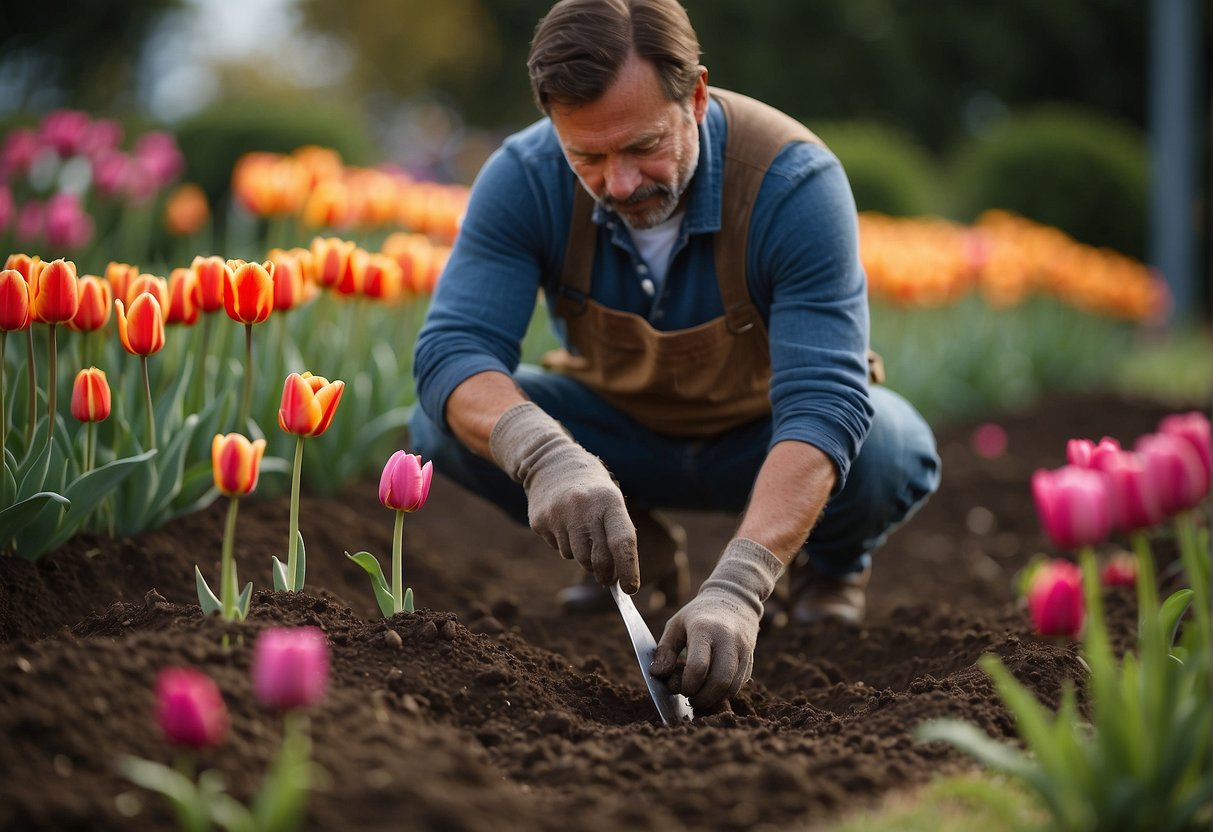
Soil Preparation
Before planting tulip bulbs, it is important to prepare the soil properly. Tulips prefer well-drained soil with a pH level between 6.0 and 7.0. If the soil is too acidic, add lime to raise the pH level. If it is too alkaline, add sulfur to lower it.
Tulips also require moist soil, so it is important to ensure that the soil has good drainage. If the soil in the planting area is heavy clay, mix in some compost or sand to improve drainage.
Choosing the Right Location
When choosing a location to plant tulips, it is important to consider the amount of space and sunlight available. Tulips require full sun or afternoon shade to grow properly.
It is also important to consider the humidity level in the planting area. Tulips prefer low humidity, so avoid planting them in areas with high humidity levels.
In summary, preparing the soil and choosing the right location are crucial steps to ensure successful tulip growth. By following these guidelines, gardeners can enjoy beautiful tulips in their garden year after year.
Planting Process
When it comes to planting tulip bulbs, there are a few important factors to consider. These include planting depth and spacing, as well as proper watering and fertilization techniques.
Planting Depth and Spacing
One of the most important things to keep in mind when planting tulip bulbs is the depth at which they should be planted. Generally, tulip bulbs should be planted at a depth of about 6 inches. This allows them to establish a strong root system and ensures that they are protected from extreme weather conditions.
In terms of spacing, tulip bulbs should be planted about 4-6 inches apart. This allows for adequate airflow around the bulbs and helps to prevent overcrowding.
Watering and Fertilization
Proper watering and fertilization are also key to ensuring that your tulip bulbs grow and thrive. When planting tulip bulbs, it is important to water them thoroughly immediately after planting. This helps to ensure that the soil is moist and that the bulbs have the necessary moisture to establish strong roots.
In terms of fertilization, many gardeners recommend using bone meal or a granular fertilizer specifically designed for bulbs. These types of fertilizers provide the necessary nutrients for healthy growth and can help to improve the overall health of your tulip bulbs.
Overall, by following these planting, watering, and fertilization techniques, gardeners can ensure that their tulip bulbs are healthy, happy, and ready to bloom come springtime.
Post-Planting Care
After planting tulip bulbs, it is important to provide proper care to ensure healthy growth and blooming. This section covers some important post-planting care tips for tulips.
Protecting from Pests
Tulip bulbs are a favorite food of rodents such as mice and voles. To protect the bulbs from these pests, it is recommended to cover the planting area with wire mesh or hardware cloth. This will prevent the rodents from digging up the bulbs and eating them.
Ongoing Maintenance
Tulips are perennials, which means they will grow back year after year. To ensure healthy growth and blooming, it is important to provide ongoing maintenance. Here are some tips for caring for tulips:
- Watering: Tulips need regular watering, especially during the growing season. Water deeply once a week, or more often if the weather is warm and dry.
- Fertilizing: Tulips benefit from a balanced fertilizer applied in early spring, just as the leaves emerge from the soil.
- Deadheading: To encourage more blooms, remove the spent flowers as soon as they fade.
- Cutting: Tulips make great cut flowers, but be sure to leave at least half of the leaves on the plant to help it store energy for next year’s growth.
- Naturalizing: Tulips can be left in the ground to naturalize, which means they will spread and multiply over time. To encourage naturalizing, avoid removing the foliage until it has turned yellow and withered.
Tulips grow best in full sun to partial shade and prefer well-drained soil. They come in a variety of colors and heights, from short annuals to tall perennials. With proper care, tulips can provide years of beautiful blooms in garden beds or as cut flowers.
Frequently Asked Questions
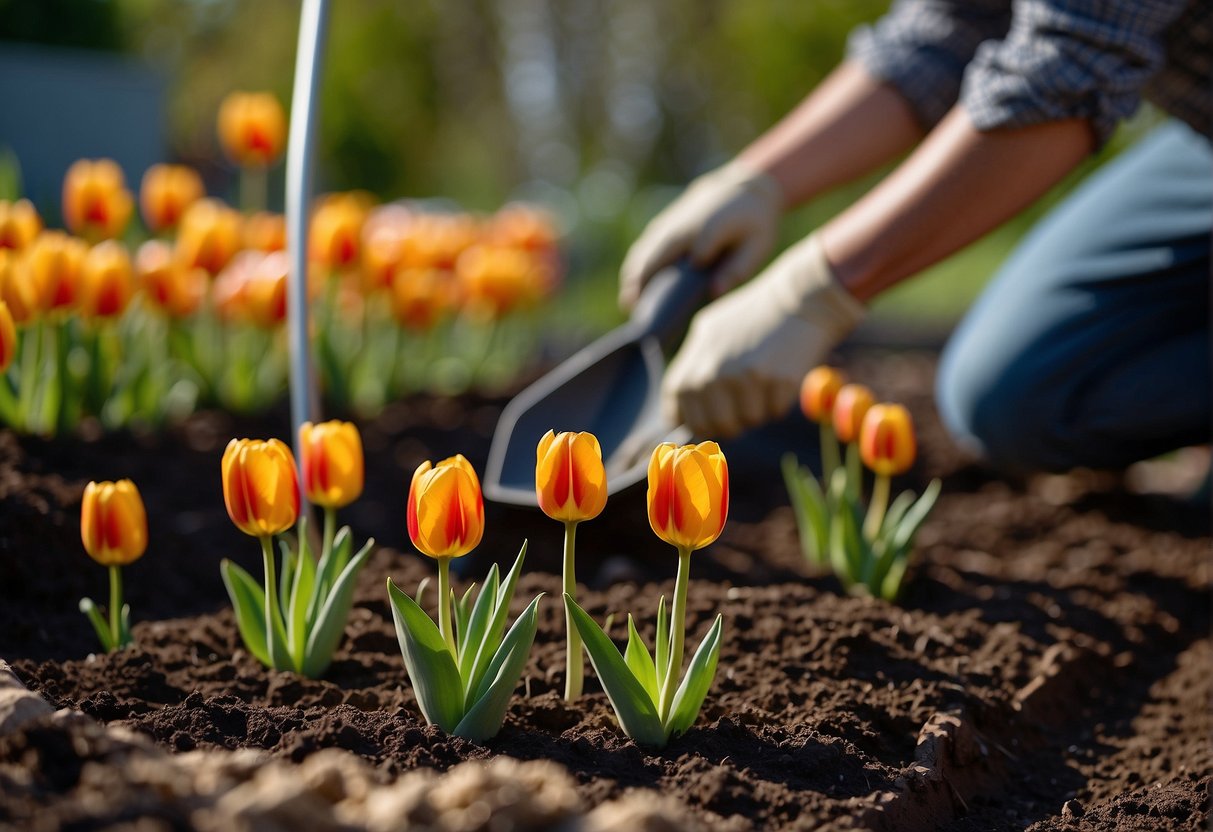
What is the best month to plant tulip bulbs in different regions?
The ideal time to plant tulip bulbs is during the fall season, between late September and early November. However, the exact timing may vary depending on the region. In colder climates, it is advisable to plant tulip bulbs earlier to allow enough time for the roots to establish before the ground freezes. In warmer regions, planting tulip bulbs in late October or early November may be better to prevent them from sprouting prematurely.
How deep should tulip bulbs be planted for optimal growth?
Tulip bulbs should be planted at a depth of about 6-8 inches (15-20 cm) in well-draining soil. Planting tulips too shallowly can result in weak stems, while planting them too deeply can cause the bulbs to rot. It is also important to ensure that the pointed end of the bulb faces upward, as this is where the stem will emerge.
Can tulip bulbs remain in the ground year-round, and do they perennialize?
Tulip bulbs can remain in the ground year-round, but they may not perennialize in all regions. In colder climates, tulips are more likely to come back year after year, while in warmer regions, they may need to be dug up and replanted each year. To increase the chances of tulips perennializing, it is important to plant them in well-draining soil and to avoid watering them excessively.
What are the ideal companion plants for tulips in a garden?
Tulips can be paired with a variety of other plants to create a beautiful and harmonious garden display. Some great companion plants for tulips include daffodils, hyacinths, crocuses, and grape hyacinths. It is also important to consider the color and height of the companion plants, as well as their blooming times, to ensure a balanced and visually appealing display.
How should tulip bulbs be spaced for a healthy and aesthetically pleasing display?
Tulip bulbs should be spaced about 4-6 inches (10-15 cm) apart to allow enough room for the bulbs to grow and for air circulation. It is also important to consider the overall design of the garden bed when spacing tulips, as they can be arranged in rows, clusters, or other patterns to create a visually appealing display.
What are the care instructions for tulip bulbs planted in pots during winter?
Tulip bulbs planted in pots during winter should be kept in a cool, dark place until the spring season. It is important to ensure that the soil in the pots does not dry out completely, but also not to overwater the bulbs. Once the weather starts to warm up, the pots can be moved to a sunny location and watered regularly to encourage growth and blooming.

